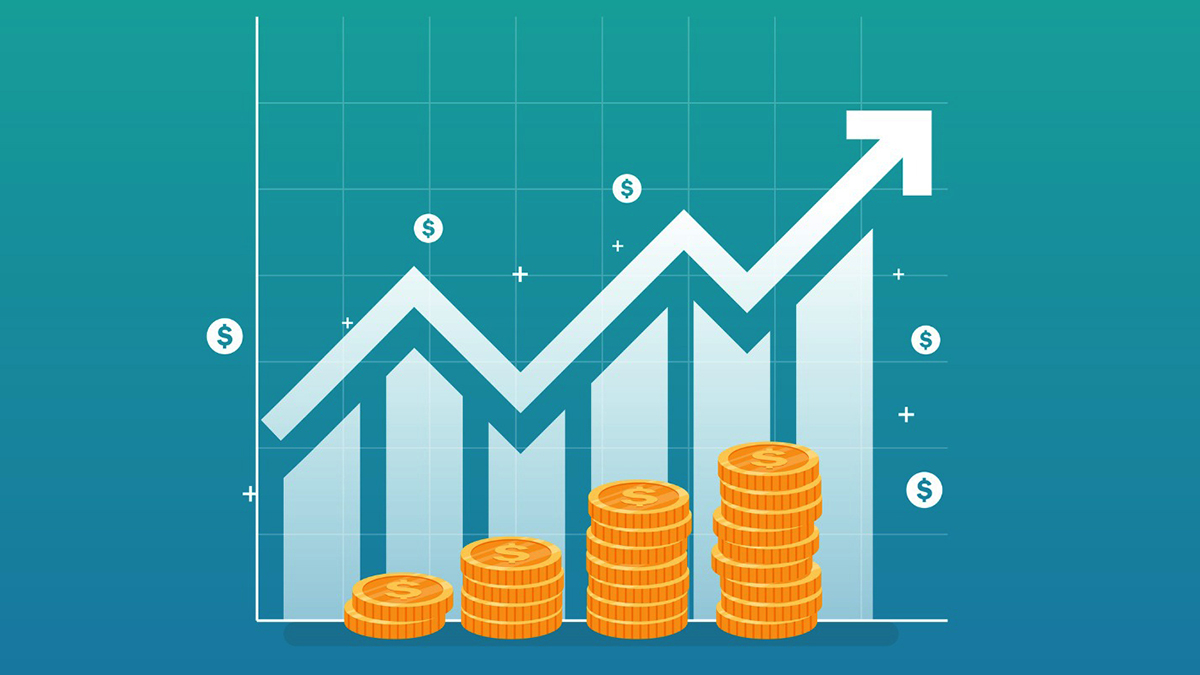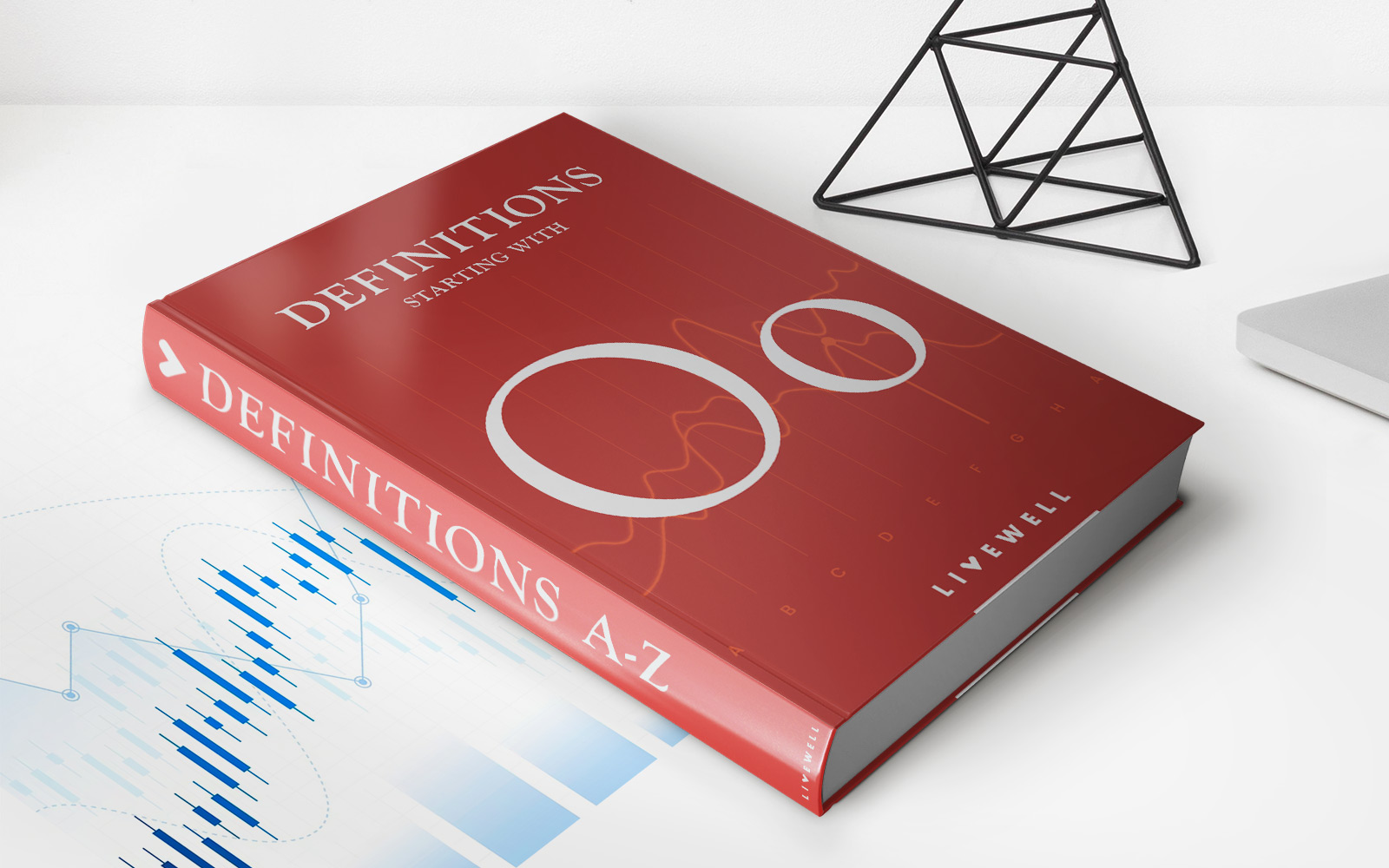

Finance
How Come My Pension Is Declining In 2022?
Published: November 27, 2023
Discover why your pension is declining in 2022 and find valuable insights and solutions to manage your finances effectively.
(Many of the links in this article redirect to a specific reviewed product. Your purchase of these products through affiliate links helps to generate commission for LiveWell, at no extra cost. Learn more)
Table of Contents
- Introduction
- What is a Pension?
- Factors Affecting Pension Performance
- Economic Factors
- Market Fluctuations
- Inflation
- Legislative Changes
- Employer Contributions and Policies
- Investment Performance
- Strategies to Mitigate Pension Decline
- Diversify Investments
- Increase Contributions
- Review Pension Provider Options
- Consider Pension Rebalancing
- Conclusion
Introduction
As retirement approaches, many individuals rely on their pension to provide a steady income to support their lifestyle. However, it can be disheartening to find that your pension is declining in value. This may leave you wondering why this is happening and what factors are influencing its performance.
A pension is a financial arrangement where an individual contributes a portion of their income during their working years to a pension fund. This fund is then invested by professionals on behalf of the individual, with the goal of generating returns and growing the pension savings.
Unfortunately, pension performance can be subject to various factors, both within and outside of our control. Economic conditions, market fluctuations, inflation, legislative changes, employer contributions and policies, and investment performance all play a role in determining the value of your pension.
In this article, we will explore these factors in more detail to help you understand why your pension may be declining in 2022. We will also provide some strategies to mitigate pension decline and ensure a more secure retirement.
What is a Pension?
A pension is a financial vehicle designed to provide individuals with a source of income during their retirement years. It is essentially a savings plan that allows individuals to contribute a portion of their earnings over their working years to secure their financial future once they stop working.
There are various types of pensions, such as employer-sponsored pensions, government pensions, and personal pensions. Employer-sponsored pensions are often offered as a benefit by companies to their employees, helping them save for retirement. Government pensions, on the other hand, are provided by the state to eligible citizens based on specific criteria, such as age or income thresholds. Personal pensions are individual retirement accounts set up by individuals to save for their retirement independently.
When contributing to a pension, individuals typically make regular payments into the pension fund, either on a monthly or a yearly basis. These contributions are invested by pension fund managers, who aim to generate returns and grow the fund’s value over time.
Upon retirement, individuals can choose to access their pension savings in various forms. They may opt for a lump sum payment, receive regular payments from the fund, or choose a combination of both. The amount and availability of pension payments depend on the specific pension plan and the individual’s circumstances.
Pensions offer individuals the advantage of long-term savings and potential tax advantages. They provide individuals with a way to accumulate wealth over time and create a stable income stream for their retirement years. However, it is important to note that the performance and value of a pension can fluctuate based on various factors, as we will explore in the following sections. Understanding these factors can help individuals make informed decisions about their pension contributions and investment strategies.
Factors Affecting Pension Performance
Several factors can influence the performance of a pension, causing its value to fluctuate over time. Understanding these factors can help individuals anticipate and manage potential declines in their pension. Let’s explore some of the key factors:
- Economic Factors: The overall state of the economy can significantly impact pension performance. During times of economic downturns, such as recessions, pension funds may experience lower returns. Economic factors such as GDP growth, interest rates, and unemployment rates can all affect the performance of pension investments.
- Market Fluctuations: Pension funds often invest in a wide range of asset classes, such as stocks, bonds, and real estate. These investments are subject to market fluctuations, which can impact pension value. For example, during times of stock market volatility, pension funds with significant stock holdings may experience declines in value.
- Inflation: Inflation erodes the purchasing power of future pension payments. If the rate of inflation exceeds the rate of return on pension investments, the real value of pension income may decline over time. It is important to consider inflation when planning for retirement and to choose investments that provide a hedge against inflation.
- Legislative Changes: Changes in pension laws and regulations can have a significant impact on pension performance. These changes can include adjustments to retirement age, contribution limits, tax treatment, and pension benefits. It is crucial to stay informed about any legislative changes that may affect your pension and adjust your retirement plans accordingly.
- Employer Contributions and Policies: The contributions made by employers to employee pensions can vary depending on company policies and financial circumstances. If an employer reduces its contributions or faces financial difficulties, it can result in a decrease in pension value. It is important to review your employer’s pension policies regularly and understand how they may affect your retirement savings.
- Investment Performance: The performance of the investments within a pension fund is a crucial factor affecting pension returns. If the investments underperform, it can lead to a decline in pension value. It is essential to monitor the performance of the pension fund’s investments and consider diversification to mitigate risk.
These factors can work together or individually to affect the performance of a pension. By understanding and preparing for these potential factors, individuals can take steps to mitigate pension decline and secure their financial future during retirement.
Economic Factors
Economic factors play a significant role in influencing the performance of pensions. The overall state of the economy can impact the returns generated by pension investments and ultimately affect the value of the pension. Here are some key economic factors to consider:
- GDP Growth: Gross Domestic Product (GDP) growth is a measure of economic activity and productivity. During periods of robust economic growth, companies tend to perform well, leading to higher corporate profits and stock market gains. This can positively impact pension investments, resulting in higher returns and an increase in pension value.
- Interest Rates: Interest rates have a significant impact on the performance of fixed-income investments, such as bonds. When interest rates are low, bond prices tend to rise, leading to higher returns. On the other hand, when interest rates rise, bond prices tend to fall, which can negatively impact pension investments heavily weighted towards bonds.
- Unemployment Rates: High unemployment rates can indicate a slowdown or contraction in the economy. When people are unemployed, they have limited disposable income to spend, resulting in reduced consumer spending. This can impact the profitability of companies and, in turn, the performance of pension investments.
- Inflation: Inflation is the rate at which the general level of prices for goods and services rises, resulting in a decrease in purchasing power. When inflation is high, it erodes the real value of future pension payments, reducing the purchasing power of retirees. Pension investments need to generate returns that outpace inflation to protect the value of pension income.
- Currency Exchange Rates: Pension funds that invest internationally are subject to currency exchange rate fluctuations. When the value of the home currency strengthens against foreign currencies, it can negatively impact the returns generated by international investments. Conversely, a weaker home currency can boost returns from international investments.
It is important to note that economic conditions are influenced by a variety of factors, including government policies, global events, and market sentiment. Therefore, it is essential to monitor economic indicators and trends to get a sense of the overall economic climate and its potential impact on pension performance.
While economic factors can impact pension returns, it is crucial to remember that pensions are long-term investments. Market fluctuations and economic cycles are a normal part of investment performance. It is advisable to consult with a financial advisor and review your investment strategy regularly to ensure alignment with your retirement goals and risk tolerance.
Market Fluctuations
Market fluctuations can have a significant impact on the performance of pension investments. Pension funds typically invest in various asset classes, including stocks, bonds, and real estate. These investments are subject to market volatility, which can result in fluctuations in the value of the pension fund. Here are some key points to understand about market fluctuations and their impact on pensions:
- Stock Market Volatility: The stock market is known for its ups and downs, and pension funds that have significant allocations to stocks can experience significant fluctuations in value. During periods of market uncertainty or economic downturns, stock prices may decline, affecting the overall value of the pension fund.
- Bond Market Changes: Pension funds often hold bonds as part of their investment portfolio. Changes in interest rates can have an impact on bond prices. When interest rates rise, bond prices tend to fall, and vice versa. This means that fluctuations in interest rates can impact the value of the pension fund’s bond holdings.
- Real Estate Market Performance: Some pension funds include real estate investments in their portfolio, such as commercial properties or real estate investment trusts (REITs). The performance of the real estate market can be subject to fluctuations, influenced by factors such as supply and demand dynamics, economic conditions, and interest rates.
- Commodity Price Volatility: Pension funds may also invest in commodities such as oil, gold, or agricultural products. These commodities are subject to price fluctuations due to factors like supply and demand dynamics, weather conditions, geopolitical events, and global economic trends. These changes can impact the value of the pension fund’s commodity investments.
- Global Events: Global events, such as political instability, natural disasters, or economic crises, can create market volatility and affect pension investments. Sudden changes in the geopolitical landscape or unexpected events can lead to investor anxiety and market sell-offs, impacting the performance of pension funds.
It is important to note that market fluctuations are a normal part of investing and cannot be completely avoided. However, there are strategies individuals can employ to mitigate the impact of market volatility on their pension, such as diversifying their investments across different asset classes, regions, and sectors. This can help spread the risk and potentially offset losses in one area with gains in another.
Additionally, a long-term perspective is essential when it comes to pension investments. While short-term market fluctuations may cause temporary declines in the value of the pension fund, staying invested and riding out market cycles can lead to long-term growth and increased pension value.
Consulting with a financial advisor can provide valuable guidance on managing market fluctuations and adjusting your investment strategy as needed to align with your retirement goals.
Inflation
Inflation is an important factor to consider when evaluating pension performance. Inflation refers to the general increase in prices of goods and services over time. It erodes the purchasing power of money, which can have a significant impact on the value of pension income. Here’s what you need to know about inflation and its implications for your pension:
When you contribute to a pension fund, you are saving for your retirement. However, it’s important to recognize that the purchasing power of your pension income will be affected by inflation. For example, if you retire with a fixed pension income, but the cost of living increases due to inflation, your pension may not be sufficient to maintain your desired lifestyle.
One common measure of inflation is the Consumer Price Index (CPI), which tracks changes in the prices of a basket of goods and services typically consumed by households. If the rate of inflation surpasses the rate of return on your pension investments, the real value of your pension income can decline over time.
Let’s say your pension provider offers an annual increase in line with inflation. While this may seem like a good thing, it may not be enough to keep up with the rising cost of living. Inflation can outpace any increases in your pension income, resulting in a decline in your purchasing power.
It’s important to take inflation into account when planning for retirement. To protect your pension from the impact of inflation, consider the following strategies:
- Invest in Inflation-Adjusted Assets: Some pension funds offer investments that are specifically designed to hedge against inflation. These investments may include inflation-linked bonds or inflation-protected securities. These assets adjust their value in line with inflation, helping to preserve the purchasing power of your pension income.
- Review and Adjust Pension Contributions: Regularly review your pension contribution amounts to ensure they are keeping pace with inflation. If possible, consider increasing your contributions to account for inflation and potentially boost your overall pension savings.
- Consider Diversification: Diversifying your pension investments across different asset classes can help protect against inflation. Assets such as stocks, real estate, and commodities have historically shown the potential to outpace inflation and provide better returns over the long term.
- Stay Informed: Keep yourself updated on the current and projected inflation rates. This information can help you make informed decisions about your pension investments and retirement planning.
It’s worth noting that the impact of inflation on pensions can vary depending on the specific pension plan and its inflation protection features. It’s advisable to review your pension plan’s terms and conditions to understand how your pension income may be affected by inflation.
By considering and accounting for the effects of inflation on your pension, you can take proactive steps to safeguard your purchasing power and ensure your pension income supports your desired lifestyle throughout your retirement years.
Legislative Changes
Legislative changes can have a significant impact on pension performance. Governments often introduce new laws and regulations that can affect various aspects of pension plans, including retirement age, contribution limits, tax treatment, and pension benefits. It is important to stay informed about these changes and understand how they may impact your pension. Here are some key points to consider:
Retirement Age Adjustments: Governments may choose to increase the retirement age to address changing demographics and increasing life expectancy. This means that you may need to delay accessing your pension benefits and continue contributing to your pension fund for a longer period. It is important to consider these changes when planning for your retirement and adjust your savings strategy accordingly.
Contribution Limits: Some pension plans have maximum limits on the amount you can contribute each year. Legislative changes can alter these limits, allowing individuals to save more for retirement or imposing restrictions on contributions. Reviewing the contribution limits and adjusting your savings plan accordingly can help maximize your pension savings.
Tax Treatment: Tax laws related to pensions can change, which may affect the tax advantages associated with pension contributions and withdrawals. Changes in pension tax relief, tax rates on pension income, or the tax-free lump sum limit can impact your overall pension value and your post-retirement income. Staying up to date with tax legislation and seeking professional advice can help you navigate the tax implications of your pension plan.
Pension Benefits: Governments may modify the structure and benefits provided by pension plans. This can include adjustments to the formula used to calculate pension payments, changes in survivor benefits, or alterations to the eligibility criteria for certain pension schemes. Understanding these changes is crucial to anticipate any potential impact on your pension income and retirement planning.
Pension Protection Schemes: Governments may introduce or modify pension protection schemes to safeguard individuals’ pension savings in the event of employer insolvency. These schemes can provide a safety net for pension holders, ensuring they receive at least a minimum level of pension benefits. Understanding the provisions of these schemes can provide peace of mind and a sense of security for pension holders.
It is essential to stay informed about any legislative changes concerning pensions. Keep up to date with government announcements, consult with pension advisors, and regularly review your pension plan’s terms and conditions. Adapting your retirement savings strategy and making necessary adjustments in response to legislative changes can help you make the most of your pension and secure your financial future.
Employer Contributions and Policies
Employer contributions and policies play a critical role in the performance of pension plans. Employers often offer pension benefits to attract and retain talent, and the contributions they make can significantly impact the value of your pension savings. Here are key points to consider regarding employer contributions and policies:
Contribution Levels: The amount your employer contributes to your pension plan can vary depending on their policies and financial circumstances. Some employers match a percentage of your contributions, while others may make fixed or discretionary contributions on behalf of their employees. Understanding your employer’s contribution policy is crucial, as higher contributions can accelerate the growth of your pension savings.
Vesting Periods: Some employers may implement a vesting period, which is the length of time an employee must work for the company before becoming eligible for employer contributions. For example, an employer may require you to work for a certain number of years before their contributions fully vest. It’s essential to be aware of these vesting periods and understand how they may impact your pension savings if you leave the company before they are fulfilled.
Matching Contributions: Employer matching contributions can be a valuable benefit. If your employer matches a percentage of your contributions, it effectively doubles your savings. Taking full advantage of the employer matching program can help you maximize your pension savings and accelerate your path to a secure retirement.
Automatic Enrollment: Some employers may have automatic enrollment policies, where employees are automatically enrolled in the pension plan unless they actively opt out. This helps encourage retirement savings and ensures that employees participate in the pension plan by default. It’s important to review the default contribution rate and adjust it according to your desired savings level.
Employer Financial Stability: The financial stability of your employer can impact the long-term sustainability of your pension plan. If your employer faces financial difficulties or goes bankrupt, it may affect their ability to contribute to your pension plan. Staying informed about your employer’s financial health can help you assess any potential risks and make informed decisions regarding your pension savings.
Employer Pension Policy Changes: Employers may periodically review and amend their pension policies. These changes can impact factors such as contribution rates, retirement age, or eligibility criteria. Staying informed about any pension policy changes from your employer can help you adjust your retirement plans accordingly and take advantage of any additional benefits or incentives.
Regularly reviewing your employer’s pension policies, understanding the contribution structure, and taking advantage of any matching programs can maximize the value of your pension savings. Additionally, remaining informed about your employer’s financial stability and any changes to their pension policies can help you navigate potential risks and make informed decisions about your retirement savings.
Investment Performance
The investment performance of a pension fund plays a crucial role in determining its overall value. Pension funds are typically invested in various asset classes, such as stocks, bonds, real estate, and commodities. The performance of these investments can significantly impact the growth and sustainability of your pension savings. Here are key points to consider regarding investment performance:
Return on Investment: The return on investment (ROI) is the gain or loss generated from the pension fund’s investment activities. A positive ROI indicates growth in the pension fund’s value, while a negative ROI represents a decline. The ROI is influenced by multiple factors such as market conditions, economic trends, and the performance of specific investment assets.
Asset Allocation: The allocation of pension fund assets plays a vital role in investment performance. The pension fund manager determines the appropriate mix of asset classes to optimize returns while managing risk. An optimal asset allocation strategy considers factors such as the individual’s risk tolerance, time horizon, and market conditions. It is important to regularly review and adjust the asset allocation to align with your retirement goals and risk tolerance.
Diversification: Diversification is a risk management strategy that involves spreading investments across different asset classes, sectors, and regions. By diversifying your pension investments, you reduce the impact of poor performance in one area and potentially benefit from stronger performance in others. Diversification helps mitigate risk and improve the overall stability of the pension fund’s value.
Investment Fees: Investment fees charged by pension fund managers can have an impact on investment performance. Fees may include management fees, administrative expenses, and brokerage costs. It’s important to understand the fees associated with your pension fund and evaluate whether they are reasonable and justified based on the level of service provided and investment returns achieved.
Active vs. Passive Management: Pension funds can be managed actively or passively. Active management involves active decision-making, such as selecting specific stocks or bonds with the aim of outperforming the market. Passive management, on the other hand, aims to replicate the performance of a specific market index. Each approach has its advantages and disadvantages, and the choice between active and passive management depends on factors such as investment objectives, risk tolerance, and costs.
Monitoring and Review: Regularly monitoring and reviewing the investment performance of your pension fund is crucial. Evaluate the returns achieved by the pension fund over different time horizons and compare them to relevant benchmarks. If the investment performance consistently falls short of expectations, it may be necessary to consider alternative investment options or consult with a financial advisor for guidance.
It’s important to note that investment performance can be influenced by various external factors and market conditions. Market fluctuations, economic trends, and geopolitical events can impact the returns generated by pension fund investments. However, it is important to maintain a long-term perspective and not make hasty decisions based on short-term market movements. Consult with a financial advisor to ensure your investment strategy aligns with your retirement goals and risk tolerance.
Strategies to Mitigate Pension Decline
Experiencing a decline in pension value can be concerning, but there are strategies you can implement to help mitigate such decline and secure your financial future. Consider the following strategies to protect and potentially enhance the performance of your pension:
Diversify Investments: Diversification is a key risk management strategy that involves spreading your pension investments across a variety of asset classes, regions, and sectors. By diversifying, you reduce the impact of poor performance in a particular investment and potentially benefit from stronger performance in others. This strategy helps to manage risk and stabilize the value of your pension fund over time.
Increase Contributions: One way to combat pension decline is to increase your contributions. By contributing more to your pension fund, you can boost your retirement savings and potentially offset any decline in value. Increasing contributions, even by a small amount, can have a significant impact on the growth of your pension savings over the long term.
Review Pension Provider Options: It’s important to periodically review your pension provider options. Compare the fees, investment options, performance track records, and services offered by different pension providers. If you find that your current provider is underperforming or charging high fees, consider switching to a different provider that better aligns with your needs and offers better potential for growth.
Consider Pension Rebalancing: Rebalancing involves periodically adjusting the asset allocation of your pension portfolio to maintain a desired risk level or target asset mix. As some investments outperform others over time, your portfolio’s allocation can shift. Rebalancing helps ensure that your pension investments remain aligned with your goals and risk tolerance, potentially mitigating decline and optimizing returns.
Stay Informed and Seek Professional Advice: Keeping yourself informed about market trends, legislative changes, and pension performance is critical. Stay updated on economic news, market conditions, and any relevant changes that may impact your pension. Engage the services of a financial advisor who can provide personalized guidance and help you make informed decisions regarding your investment strategy and retirement objectives.
Remember, pension decline can occur due to a variety of factors, some of which are beyond your control. However, by implementing these strategies, you can take an active role in managing and protecting your pension savings. Regularly reviewing your pension plan, making appropriate adjustments, and seeking professional advice can enhance your chances of achieving a comfortable and secure retirement.
Diversify Investments
One of the most effective strategies to mitigate pension decline is to diversify your investments within your pension portfolio. Diversification involves spreading your pension savings across a range of asset classes, sectors, and geographic regions to reduce risk and enhance the potential for returns. Here’s why diversification is important and how you can implement it:
Reducing Risk: Diversification is essential because it helps reduce the impact of poor performance in any single investment. By spreading your pension funds across different asset classes, such as stocks, bonds, real estate, and commodities, you are less exposed to the volatility of any one market or security. If one asset class experiences a decline, other asset classes may potentially provide stability and offset losses.
Maximizing Returns: Diversification offers the opportunity to capture returns from various investment sources. While some assets may experience negative performance, others may have positive performance. By having a diversified pension portfolio, you increase the likelihood of benefiting from sectors or regions that are performing well and taking advantage of different investment opportunities.
Asset Allocation: Effective diversification involves strategic asset allocation, which requires assessing your risk tolerance and investment goals. Consider your time horizon until retirement, as well as your financial objectives. Choose an asset allocation mix that balances risk and potential returns. Generally, younger individuals may have a higher appetite for risk and may allocate a higher proportion of their pension savings to equities, while individuals nearing retirement may opt for a more conservative allocation that includes a higher percentage of fixed-income investments.
Consider Different Asset Classes: Diversifying your pension investments goes beyond just investing in stocks and bonds. Consider alternative investments such as real estate, commodities, or even venture capital. These asset classes can provide diversification benefits and potentially enhance your pension’s performance. However, it’s important to carefully evaluate their risk profiles and understand their liquidity characteristics before investing.
Regularly Rebalance: Over time, the performance of different asset classes within your pension portfolio can vary, causing your asset allocation to deviate from your intended targets. Regularly rebalancing your portfolio involves selling or buying assets to bring your portfolio back to its desired allocation. Rebalancing ensures that you maintain your intended risk level and potentially capture gains from asset classes that have performed well.
Seek Professional Advice: Pension diversification and asset allocation can be complex. It is advisable to seek the guidance of a professional financial advisor or pension planner who can assess your specific circumstances and help design a diversified investment strategy tailored to your needs and goals. They can provide expertise in selecting appropriate investments and monitor your portfolio’s performance over time.
Remember, diversification does not guarantee a profit or protect against losses, but it is an effective risk management strategy. By diversifying your pension investments across different asset classes, you can potentially mitigate pension decline and enhance the likelihood of achieving your long-term retirement goals.
Increase Contributions
One strategy to combat pension decline is to increase your contributions to your pension fund. By contributing more to your pension, you can boost your retirement savings and potentially offset any decline in value. Here’s why increasing contributions is important and how you can implement it:
Accelerating Retirement Savings: Increasing your contributions allows you to save a higher amount of money for retirement. As you contribute more to your pension fund, your savings have the potential to grow at a faster rate, especially when compounded over time. This can help compensate for any decline in pension value and strengthen your overall retirement savings.
Take Advantage of Tax Advantages: Contributing more to your pension can offer tax advantages. Many countries provide tax incentives for pension contributions, such as tax breaks or deductions. By increasing your contributions, you may be able to reduce your taxable income, potentially lowering your overall tax liability. This can free up additional funds to put towards your retirement savings.
Compound Interest Effect: Increasing your contributions can have a powerful impact on the growth of your pension fund due to the power of compound interest. Compound interest allows your savings to earn returns not only on the original amount contributed but also on the accumulated interest over time. By contributing more, you increase the base amount on which interest is calculated, resulting in higher potential long-term growth.
Make Frequent Adjustments: As your financial situation improves over time, consider making periodic adjustments to your pension contributions. As you receive pay raises or bonuses, allocate a portion of the additional income towards your pension savings. Regularly reviewing and adjusting your contributions will allow you to stay on track with your retirement goals and adapt to changing circumstances.
Automate Contributions: To ensure consistent and disciplined savings, consider automating your pension contributions. Set up automatic deductions from your salary or bank account to be allocated towards your pension fund. By automating contributions, you remove the temptation to spend the funds elsewhere and ensure a regular and systematic approach to saving for retirement.
Take Advantage of Employer Matching: If your employer offers a matching program, where they contribute a percentage of your contributions, take full advantage of it. Employer matching is essentially free money added to your pension fund. By increasing your contributions to the level where you can maximize employer matching, you can significantly boost your retirement savings without any additional out-of-pocket cost.
Consider Catch-Up Contributions: Some pension plans offer catch-up contributions for individuals nearing retirement age or those who have not maximized their contributions in previous years. These catch-up provisions allow you to contribute additional funds above the regular contribution limits. Taking advantage of catch-up contributions can help you quickly boost your pension savings in the years leading up to retirement.
When increasing your pension contributions, it’s essential to review your budget and determine a feasible amount to contribute without straining your finances. It’s also advisable to consult with a financial advisor to ensure that your increased contributions align with your overall financial plan and retirement objectives.
By increasing your pension contributions, you are taking proactive steps towards securing your financial future. The additional savings have the potential to offset any decline in pension value and provide you with a stronger retirement foundation.
Review Pension Provider Options
Reviewing your pension provider options is an important step in protecting and optimizing your pension savings. The pension provider you choose can significantly impact the performance, fees, services, and flexibility of your pension plan. Here’s why reviewing your pension provider options is crucial and how you can go about it:
Performance Track Record: Assess the historical performance of different pension providers. Look for consistent, competitive returns over the long term. Review performance against relevant benchmarks to gauge the provider’s investment management skills. Evaluating performance can give you an idea of the potential growth and stability of your pension savings under different providers.
Investment Options: Consider the range of investment options offered by different pension providers. Look for providers that offer a diverse selection of asset classes, such as stocks, bonds, real estate, and international investments. A wider range of investment options allows you to tailor your portfolio to your risk tolerance, goals, and time horizon.
Fees and Charges: Review the fees and charges associated with each pension provider. Pay close attention to management fees, administrative expenses, transaction costs, and any other charges that may eat into your pension returns. Comparing the fees charged by different providers can help you identify the most cost-effective option without compromising on quality and services.
Quality of Service: Evaluate the level of customer service provided by pension providers. Consider factors such as accessibility, responsiveness, and the availability of tools and resources to help you manage your pension effectively. Assess whether the provider offers online account access, educational materials, retirement planning tools, or retirement calculators to support informed decision-making.
Flexibility and Portability: Consider the flexibility and portability of your pension plan. Assess whether the provider allows contributions to be adjusted easily, provides options for catch-up contributions or additional voluntary contributions, or permits transfers of existing pensions from other providers. Flexibility and portability can be valuable features if your circumstances change or if you need to consolidate multiple pensions.
Financial Stability: Assess the financial stability and reputation of the pension providers you are considering. Look for providers with strong financial backing, solid track records, and a history of reliability. You want to ensure that your chosen provider will have the resources to fulfill their pension obligations and support your retirement needs for the long term.
Seek Professional Advice: Considering the complexities involved in selecting a pension provider, it is advisable to seek professional advice. A financial advisor or pension specialist can guide you through the process, help you evaluate your options based on your specific circumstances, and provide insights into the reputation, performance, and suitability of different pension providers.
Taking the time to review and compare pension provider options can help you identify the provider that aligns best with your retirement goals, offers competitive performance, affordable fees, and valuable services. By choosing the right pension provider, you can enhance the potential growth and security of your pension savings throughout your retirement journey.
Consider Pension Rebalancing
Pension rebalancing is a strategy that involves periodically adjusting the asset allocation of your pension portfolio to maintain a desired risk level or target asset mix. As the performance of different assets within your pension fund varies over time, your portfolio’s allocation can deviate from your intended targets. Consider the following points to understand the importance of pension rebalancing and how to implement it effectively:
Preserving Risk-Return Profile: Rebalancing helps ensure that your pension portfolio maintains the desired risk-return profile you established when initially setting your asset allocation. As certain assets appreciate or depreciate, the risk-reward trade-off may change. Rebalancing allows you to realign your portfolio with your target asset mix, reducing the risk of being disproportionately exposed to one asset class.
Buy Low, Sell High: Rebalancing forces you to sell investments that have performed well and buy investments that have underperformed. This counterintuitive approach allows you to take profits from assets that may be overvalued and reinvest them in assets that may be undervalued. By consistently buying low and selling high, you enhance the potential for long-term returns and reduce the impact of market volatility on your pension savings.
Disciplined Approach: Pension rebalancing encourages a disciplined approach to investing. It helps prevent emotional decision-making driven by short-term market fluctuations. Rebalancing based on predetermined asset allocation thresholds ensures your investments remain aligned with your long-term goals and risk tolerance, rather than reacting to market sentiment.
Time-Based or Threshold-Based Rebalancing: Pension rebalancing can be performed on a time-based or threshold-based approach. Time-based rebalancing involves adjusting your portfolio at regular intervals, such as annually or semi-annually. Threshold-based rebalancing, on the other hand, involves rebalancing when the actual allocation deviates significantly from the target by a predetermined percentage. Choose a rebalancing approach that suits your preferences and ensures your pension portfolio remains aligned with your investment objectives.
Review and Adjust Asset Allocation: Consider conducting a comprehensive review of your asset allocation periodically or whenever significant life changes occur, such as nearing retirement. Adjust your asset allocation to reflect changes in your risk tolerance, investment goals, or market conditions. As you age, you may gradually shift your portfolio towards a more conservative allocation to protect capital and reduce volatility.
Consult with a Financial Advisor: Pension rebalancing can be a complex process, especially considering tax implications and the potential impact on your retirement plan. It’s beneficial to consult with a financial advisor who specializes in retirement planning and asset allocation. They can assess your specific circumstances, develop an appropriate rebalancing strategy, and provide guidance on the most tax-efficient approach.
Remember, market conditions and investment performance can influence the need for rebalancing. It’s important to strike a balance between maintaining your desired asset allocation and avoiding unnecessary transaction costs or tax consequences associated with excessive portfolio turnover. By periodically rebalancing your pension portfolio, you can manage risk, enhance potential returns, and maintain a disciplined approach to achieving your retirement goals.
Conclusion
Experiencing a decline in your pension value can be a concerning and frustrating experience, but it’s important to remember that pension performance can be influenced by various factors, some within your control and others outside of it. By understanding the factors that can contribute to pension decline and implementing effective strategies, you can work towards mitigating the decline and securing your financial future during retirement.
Throughout this article, we discussed several key factors that can impact pension performance, including economic conditions, market fluctuations, inflation, legislative changes, employer contributions and policies, and investment performance. Recognizing these factors and their potential effects can help you make informed decisions about your pension savings and investment strategies.
We explored strategies to mitigate pension decline, such as diversifying your investments, increasing contributions, reviewing pension provider options, considering pension rebalancing, and staying informed about legislative changes. These strategies empower you to take a proactive approach in managing and protecting your pension savings.
Remember, it’s important to regularly review your pension plan, monitor its performance, and make adjustments as needed. Consulting with a financial advisor can provide valuable insights and personalized guidance to help you navigate pension challenges and optimize your retirement savings.
While pension decline may be disheartening, it’s crucial to maintain a long-term perspective. Market fluctuations and economic cycles are natural elements of investing, and staying invested throughout these fluctuations can lead to potential long-term growth. By staying informed, making well-informed decisions, and actively managing your pension, you can work towards a more secure and comfortable retirement.
Start taking steps today to protect and enhance the value of your pension. Your future self will thank you for the careful planning and strategic decision-making that will contribute to a financially stable and fulfilling retirement.














